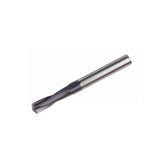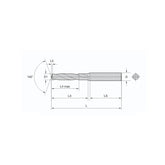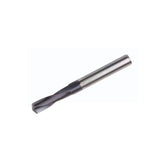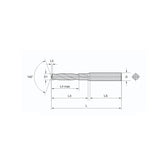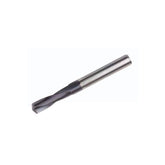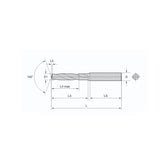A Guide to Carbide Drill Bits Wear Problems
Solid Carbide Drill Bit Wear and Problem Application Guide
Professional solutions for common wear and problems in mechanical processing
In the modern field of mechanical processing, solid carbide drill bits, with their excellent hardness, wear resistance, and precision, are widely used in various high-difficulty drilling tasks. However, as processing demands become increasingly complex and the frequency of use of cutting tools increases, the wear and application issues of solid carbide drill bits are becoming more prominent.
To help a wide range of processing personnel better address these challenges, the following is a comprehensive application guide that provides professional solutions for common wear and problems.
1. Buildup Problem
Buildup is a common phenomenon during processing, usually caused by low cutting speed, excessive wear of the main cutting edge, or uncoated cutting edges. Buildup not only affects the surface quality of the workpiece but can also accelerate tool wear.
- Increase cutting speed: Appropriately increasing the cutting speed can reduce the dwell time of chips on the cutting edge.
- Reduce the wear of the cutting edge: Maintaining the sharpness of the cutting edge helps in smooth chip evacuation.
- Use coated tools: Coatings can effectively improve wear resistance and anti-buildup performance.
2. Chipping of the Cutting Tip
Chipping of the cutting tip is often caused by unstable conditions, excessive runout, or intermittent cutting. This damage can severely affect the accuracy and surface quality of the drilled hole.
- Change the holding system: Choose an appropriate holding system to ensure stability.
- Optimize runout: Check and adjust equipment to reduce radial runout.
- Reduce the feed rate: Appropriately lowering the feed rate decreases load on the cutting tip.
3. Severe Flank Wear
Flank wear is one of the common phenomena during tool use, and its severity is closely related to cutting speed, feed rate, and the relief angle of the tool.
- Reduce cutting speed: Appropriately lowering cutting speed decreases friction.
- Increase feed rate: Reasonably increasing feed rate improves cutting conditions.
- Increase the relief angle: Enlarging the relief angle improves heat dissipation.
4. Main Cutting Edge Chipping
Chipping of the main cutting edge is usually caused by unstable conditions, intermittent cutting, or exceeding the maximum wear width.
- Improve stability: Ensure tool and workpiece are stably clamped during processing to reduce vibration and impact.
- Reduce the feed rate: Appropriately lowering the feed rate can decrease the load on the main cutting edge.
- Optimize the tool: Choose appropriate tool geometry and material.
- Replace the tool in advance: Timely replacement prevents excessive wear leading to chipping.
5. Margin Wear
Margin wear is usually caused by unstable conditions, excessive runout, or insufficient taper.
- Improve stability: Ensure stable clamping during processing to reduce vibration and impact.
- Check radial runout: Regularly inspect equipment and maintain it to ensure normal operation.
- Increase the taper: Appropriately increasing the taper can improve cutting conditions.
- Use coolant or oil with higher viscosity: Improves cooling and lubrication effects.
6. Shank Scratches
Shank scratches are usually caused by unstable conditions, excessive runout, or intermittent cutting.
- Change the holding system: Choose an appropriate system to ensure stability.
- Correct radial runout: Reduce runout for smooth tool operation.
- Reduce the feed rate: Decreases load on the shank.
- Use higher viscosity coolant: Improves cooling and lubrication.
Conclusion
During processing, the wear and problems of solid carbide drill bits are diverse, but most issues can be effectively addressed by reasonably adjusting processing parameters, optimizing tool design, and selecting appropriate cooling and lubricating fluids.
Regular maintenance, proper storage, and using the correct tool for each material are key to maximizing drill bit lifespan and maintaining machining quality.
